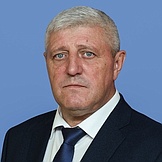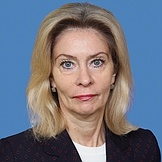Regional flags and emblems


PROFILE
Established 23 August 1944
Capital Pskov
The Pskov Region is part of the Northwestern Federal District
Area 55,400 sq km
Population 574 200 (2025)
Ethnic groups
(2020 National Census, %)
Russian – 95,78
Other – 4,22
Administrative divisions (2024)
Municipal districts – 16
Municipalities – 8
City districts – 2
Rural towns – 17
Rural districts – 60
Geography and climate
The Pskov Region is located in the northwest of the European part of Russia. The terrain is generally flat. The Velikoretskaya Plain with the Pskov-Chudskoye Lakeside Lowland is located in the west; the Luzhskaya, Sudomskaya and Bezhanitskaya highlands, are located in the east.
At its widest points, the region is 380 km north to south and 260 km west to east.
The Pskov Region borders on the Leningrad, Novgorod, Tver and Smolensk regions, as well as the Republic of Latvia, the Republic of Estonia and the Republic of Belarus. The Pskov Region is one of two Russian regions that borders on three countries.
There are over 3,000 lakes, including the fifth largest in Europe – Lake Pskov-Chudskoye (3,558 sq km). The main rivers are the Velikaya, Lovat, Plyussa, Issa, Shelon, Cherekha, Zhelcha, and Pskova.
The climate is moderate continental. The average January temperature is −3°C. The average July temperature is 19.4°C. Precipitation averages 47 mm in January and 61 mm in July. The vegetation period lasts 144 days.
The region has temperate broadleaf and mixed forests (fir, pine, birch, aspen).
Soils: podzolic, sod-podzolic and wetland; alluvial meadows in river valleys.
The republic includes Polistovksy State Nature Reserve, Remdovsky State Wildlife Sanctuary and Sebezhsky National Park, as well as 11 regional wildlife sanctuaries, 17 regional natural landmarks and 10 local natural landmarks.
Government
The legislative branch is the Pskov Region Council of Deputies, which is the permanent, representative and only body of legislative authority in the region.
The Council has 26 deputies, with 13 running in single-mandate constituencies and the other 13 in the single electoral district in proportion to the number of votes cast for lists of candidates nominated by electoral associations.
The current Council of Deputies was elected on September 2021. Its term expires in September 2026.
The executive branch in the Pskov Region is represented by the Governor of the Pskov Region, the Government of the Pskov Region and other executive agencies of the region. The Government of the Pskov Region is the supreme and permanent executive body in the region.
The Governor of the Pskov Region is the region’s highest-ranking official, who heads the executive branch in the region, forms and heads the Government of the Pskov Region. The Governor is elected for five years by Russian citizens who permanently reside in the region. The term of office of the current incumbent expires in September 2028.
Economy and natural resources
Industrial output accounts for about 20% of the regional GDP. The processing industry (about 17% of the regional GDP) is represented by machine-building, including electrical engineering, manufacturing of equipment for the chemical and textile industries, peat machines, radio electronics, consumer goods and timber processing industries, construction materials industry and food processing. The Pskov Region is Russia’s only manufacturer of P-class traction electric engines for railway transport.
Mineral extraction in the region based on proven deposits of peat, lime, construction stone, sand and gravel, brick and tile clays, as well as facing stone.
The production and distribution of electricity, gas and water is provided by thermal power stations and combined heat and power stations. The region’s leading industries are construction, transport, communications, wholesale and retail trade.
Agriculture amounts to about 12% of the regional GDP. The main agricultural sectors are dairy and beef cattle breeding, poultry farming, and vegetable and potato growing.
The most valuable natural resources found in the Pskov Region are deposits of limestone, sand and gravel, dolomites, marl, gypsum, high-melting and low-melting clays, dry sand, raw materials for mineral dye production, sapropel, therapeutic muds, and underground mineral waters.
The Pskov Region is known for its forests that cover one third of the region’s territory. The Pskov Region is one of the most peat-rich regions in the European part of Russia. It has over 300 peat deposits with over 563 mln tonnes of peat. The largest deposits are in the Bezhanitsy, Gdov and Sebezh districts.
The region also produces raw materials for mineral dye production; sapropel is widely used through medicine and through production of construction materials; therapeutic muds and clays are used in medicine due to their healing properties. The production of mineral waters, both for internal and external use, is also beneficial.
Eight developed deposits of mineral waters have a capacity of over 5 mln cu. m.
The region is also rich in mushrooms, berries (blueberry, lingonberry and cranberry) and medicinal herbs. Interestingly, it is more profitable to collect mushrooms in a given area than produce timber. The forests are also good for hunting: the region is home to over 20 wild animal species, including those with valuable types of fur — beavers, martens, otters and European minks.
Culture and tourism
The Pskov Region is famous in Russia and abroad for its invaluable historical and cultural heritage. Ancient temples and castles, noble mansions and parks, picturesque villages and exciting cities with unique cultural traditions, forests and plains inhabited by unique animals and birds, archaeological treasures and works by modern artists – all of that is represented in the Pskov Region and its culture.
The white-stone Pskov Kremlin that dates back 3,000 years is the heart of old Pskov. The Kremlin’s three-hectare area has ancient monuments and buildings, including the most important defensive part of the fortress: the Daumantas Town. Alexander Nevsky prayed in the St Trinity Cathedral (10th century) before the Battle on the Ice. The region also has one of Russia’s largest and most famous monasteries, the Pskovo-Pechersky Dormition Monastery, founded in the 15th century and has never since closed. Another famous place is the Svyatogorsky Monastery. Built in the 16th century it is the burial site of Russian poet Alexander Pushkin.
The Pskov Region is the home to many famous people, philosophical concepts and pieces of art that form the glory of both Russian and world cultures. Mansions and estates, built in 18th−early 20th centuries, are associated with the names of Vasily Tatishchev, Sofia Kovalevskaya, Modest Mussorgsky, Nikolai Rimsky-Korsakov, Alexander Blok, and Alexander Pushkin, who spent several years at his parents’ estate where he wrote countless literary works.
The 20th century life and works of writers Veniamin Kaverin and Yury Tynyanov, scientist Lev Zilber, actor Zinovy Gerdt linked back to Pskov and its region.
The region has three state museums with eight branches and 16 municipal museums. There are also five educational institutions with tourism courses. The most important cities are Pskov, Pechory, Puskinskiye Gory, Izborsk, Velikiye Luki, Gdov, Sebezh and Porkhov. In the Pskov Region there are 372 monuments of federal significance and 3,570 monuments of local importance. Tourists can visit ancient fortresses in Pskov, Izborsk, Porkhov, and Velikiye Luki.
Every year, Pskov hosts the All-Russian Pancake Week, the Gardarika Festival of Small Towns, a hot air balloon festival in Velikiye Luki, the Pskov Pearls folklore festival, the Battle on the Ice military and historical festival, and the Helga medieval re-enactment.


